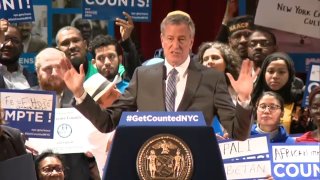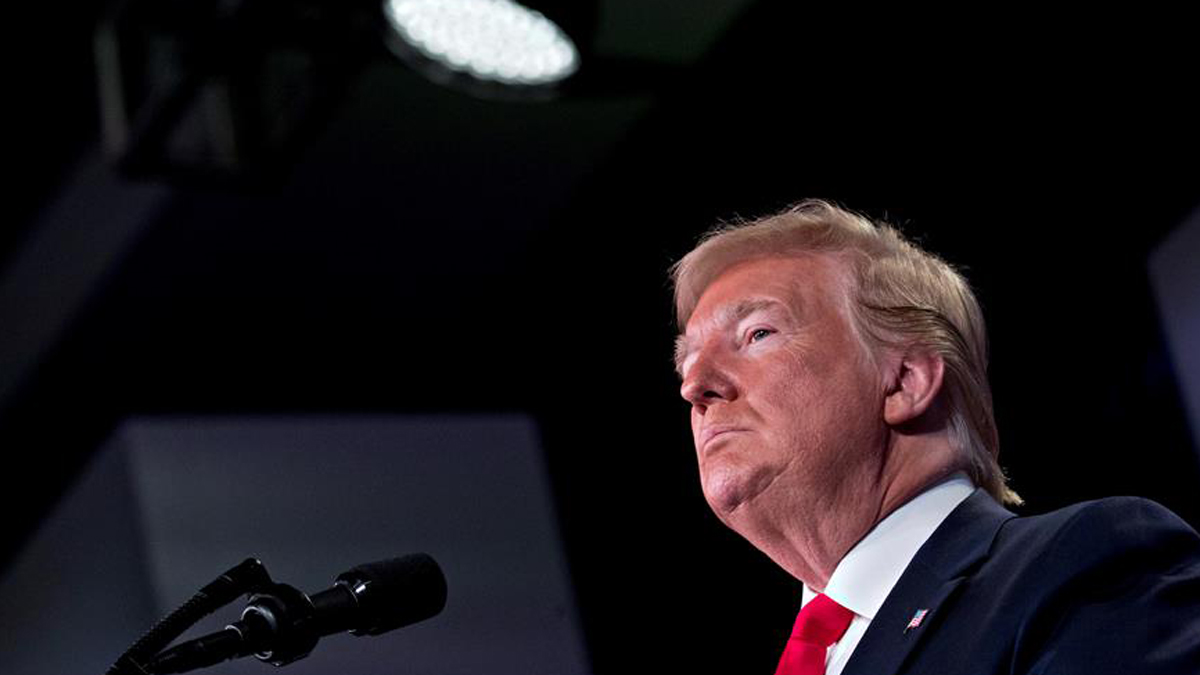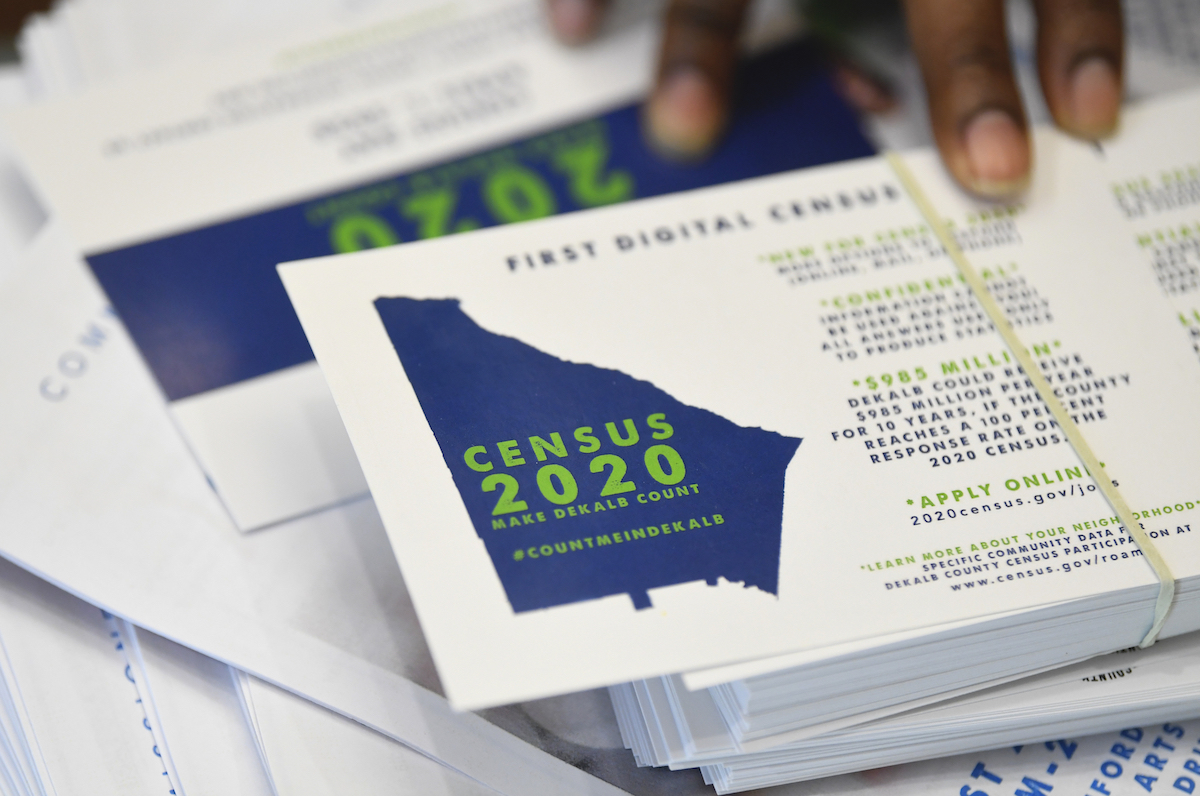
What to Know
- New York City officials kicked off the city's Complete Count Campaign on Tuesday
- The $40 million initiative that is the largest and most diverse coordinated municipal effort to achieve a complete and accurate 2020 Census count
- Officials contend that the need to get the word out about the importance of completing the 2020 Census is incredibly important -- given that federal funding is on the line
New York City officials kicked off the city's Complete Count Campaign on Tuesday -- a $40 million initiative that is the largest and most diverse coordinated municipal effort to achieve a complete and accurate 2020 Census count.
“New York City has been on the front lines of the resistance against the Trump Administration and ensuring every New Yorker gets counted is central to that fight," Mayor Bill de Blasio said in a statement. "No matter how hard the federal government tries to silence our diverse voices, we still stand up and be counted.”
The census outreach campaign involves a partnership between the mayoral administration, the City Council, CUNY, and 157 community-based organizations across all five boroughs, as well as the city's three library systems, labor unions, and civic and private institutions.
These entities, in conjunction with an overall joint $40 million investment by de Blasio and City Council Speaker Corey Johnson, the NYC Complete Count Campaign is the largest census-focused municipal campaign in the nation, according to the city.
Of the $40 million funding, $23 million will go towards community-based organizing and outreach, the largest such investment by any city in the nation.
Additionally, with just eight weeks until New Yorkers can begin completing the census online for the first time starting March 12, de Blasio and NYC Census 2020 Director Julie Menin also announced that the city will invest $3 million in community and ethnic media advertising to ensure participation among the city's most historically undercounted communities.
Officials contend that the need to get the word out about the importance of completing the 2020 Census is incredibly important -- given that federal funding is on the line.
“A complete headcount in the 2020 Census is crucial for the future well-being of our city. We have to get this right to ensure we receive the proper federal funding for our schools, our roads, our health care, our public housing, and more. This is our once-in-a-decade opportunity to show the federal government that we are here, and that we count," Johnson said in a statement.
The campaign plan released Tuesday includes:
- Targeted campaign-style organizing, with a focus on "Get Out The Count " activities in historically undercounted communities;
- Aggressive earned media, paid media, and social media strategy featuring everyday New Yorkers and trusted community voices;
- Deep collaboration across all sectors: city agencies, houses of worship, elected officials, employers, unions, and more;
- Sophisticated data analysis and modern outreach tactics with new technologies to target outreach to priority neighborhoods, increase efficiency, and enable comparison to real-time self-response data from the U.S. Census Bureau
More than 1,800 New Yorkers have already signed up as Neighborhood Organizing Census Committees volunteers through NYC Census 2020's field operation. Volunteers will primarily engage in four organizing tactics: teach-ins, phone banking, "text-banking ," and community canvassing. In addition to the NOCCs program, NYC Census 2020 and its partners will recruit and train trusted leaders to serve as "Census Ambassadors " who will help educate New Yorkers about the census at teach-ins and other community events.
An undercount could cost the State of New York up to two congressional seats, significantly weakening the power of New York's voice in Washington, city officials say.
In 2010, New York City's initial self-response rate was approximately 15 percentage points less than the national average, and the U.S. Census Bureau estimates that the New York area's self-response rate could be as low as 58 percent in 2020, according to the city. The U.S. Census Bureau also recently published its final 2019 Census Test report, showing that thee self-response rate could have been even lower from Asian and Hispanic populations if a citizenship question had been included.



